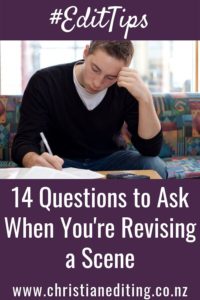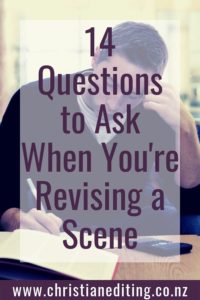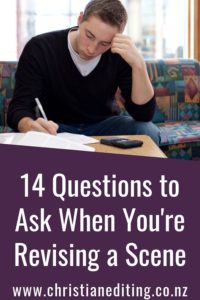Plot and structure are two of the foundations of a great novel. I have previously discussed the high-level structure of a novel—the three-act structure—and the micro structure—scene structure.
But knowing how to write a great scene or structure a novel is no guarantee of a great novel.
Great novels need a plot. And conflict. I know. This sounds obvious. All novels have conflict. Don’t they? Unfortunately, no. (This is the voice of many manuscript assessments, and many books on the virtual DNF pile.)
What is Plot?
Jack Bickham says plot is a long narrative with linear development from the posing of a story question at the outset to the answering of that question at the climax (Scene and Structure).
James Frey says plot is the progress toward the resolution of a predicament that transforms the character (The Philosophy of Plot, Chapter One of The Complete Handbook of Novel Writing).
Ronald Tobias says plot is about more than story. Story is a series of events. Plot is a pattern of action and reaction that asks a bigger question: Why does this happen? (20 Master Plots and How to Build Them). That could be the story question.
James Scott Bell says the LOCK elements are essential for a good plot: a Lead character the reader can bond with, an Objective, a Confrontation (i.e. conflict), and a Knockout ending (Revision and Self-Editing for Publication).
How do we write a great novel? By making sure we have a plot with plenty of believable and sustainable conflict. Here are five #writetips for writing conflict in fiction. Click To TweetWhile each of these experts uses different words, there are some important key themes:
• There is a protagonist, a main character.
• The main character wants something.
• The main character experiences problems.
• There is a resolution—an end point.
• The main character experiences some kind of personal growth or change.
All these themes relate to conflict.
Many manuscripts fall down on one or more of these five factors.
Main Character
One common problem is not having a clear main character e.g. where the first few chapters give the impression Character A is the main character, but the synopsis shows it’s Character B.
It’s best to stick with one main character. Yes, there will be a love interest in a romance novel (maybe more than one). The love interest may even be a point of view character, and have their own goals, motivations, and conflicts. But the love interest is not main characters.
The Goal
The main character has want something so much that they will suffer in some way if they don’t get it. There also has to be consequences for not achieving the goal.
- What does your main character want? (That’s their goal.)
- Why do they want it? (That’s their motivation.)
- What’s stopping them achieving their goal? (That’s the conflict.)
- What will happen if your main character doesn’t achieve their goal? (That’s the stakes.)
The goal leads into the story question:
[Character] wants [goal] because [motivation] or else [stakes], but [conflict]. Will the character achieve their goal?
A goal links a series of interesting and unrelated events into a series of related scenes—a plot, and gives the story forward motion. That forward motion is what keeps the reader engaged and reading.
(Click here to check out my top tips on writing a great scene.)
Conflict and Stakes
Conflict is the essence of great fiction. Debra Dixon says:
If conflict makes you uncomfortable or you have difficulty wrecking the lives of your characters, you need to consider another line of work. (GMC: Goals, Motivation, Conflict).
There are three levels of conflict:
- Story conflict (the conflict that drives the main plot).
- Scene conflict (the conflict that drives the individual scene, as I discussed last month).
- Character conflict (two characters who want different things i.e. conflicting GMC).
Readers want conflict. But they want conflict that is compelling and believable. Readers do not want conflict that is solved too quickly. I read one novel which introduced a new conflict every couple of chapters, but solved the conflict almost instantly.
- Someone sabotaged the heroine’s car. Oh no! Don’t worry: the car park was under video surveillance and the evildoer was caught within hours.
- The heroine is diagnosed as infertile. Oh no! Don’t worry: someone offers her a baby to adopt the next day.
- The heroine decides her baby needs a sibling. Oh no! Don’t worry: the birth mother of her first baby is pregnant and looking to adopt again.
That’s not how life works, and it robs your reader by offering unrealistic conflict.
Equally, don’t drag out the conflict longer than makes sense.
If the conflict could be solved by the two main characters having a five-minute conversation, then either make sure they have the conversation or find compelling reasons why they can’t.
Conflict should escalate throughout the novel, leading to the Black Moment where the main character thinks all is lost. Susan May Warren (The Story Equation) refers to this sequence: disappointment, disaster, destruction, devastation.
The stakes are also important.
The character has to be at risk of losing something of value. For example, thrillers often feature serial killers. The stakes are physical death—the main character has to find the killer before they claim another victim. Other important stakes are professional death (find the killer or lose your job), or psychological death (find the killer or lose your reputation or self-respect).
Note that falling in love and living happily ever after (or happily for now) isn’t stakes.
Yes, it’s the overarching plot and expected end of a romance novel, but it’s not stakes … unless there is something keeping the couple apart (which explains tropes like opposites attract or best friend’s brother or step-siblings).
The Resolution
The end of the story needs to clearly resolve the main conflict. Has the main character achieved their goal? If not, why not? What are the consequences?
In a romance novel, the main character and the romance character also have to get their happy-ever-after (or happy-for-now). They do not break up in the second-to-last chapter … then reunite and marry in the gap between book one and book two in the series. Yes, I’m still bitter about that so-called romance series.
Bring the story to a close, and give the reader the ending they expect.
No, you don’t have to tie up all the lose ends—especially not if you’re writing a series. But answer the story question. Otherwise you’ll get stinking reviews for leaving your readers with a cliffhanger ending.
Character Change
In character-driven genres like romance, the main character will generally come to some realisation that changes their views and allows them to pursue their happy-ever-after. But change never comes easily, so this change drives the character’s internal conflict.
This character change is often related to their emotional wound or the lie they believe … but that’s a topic for another post.







